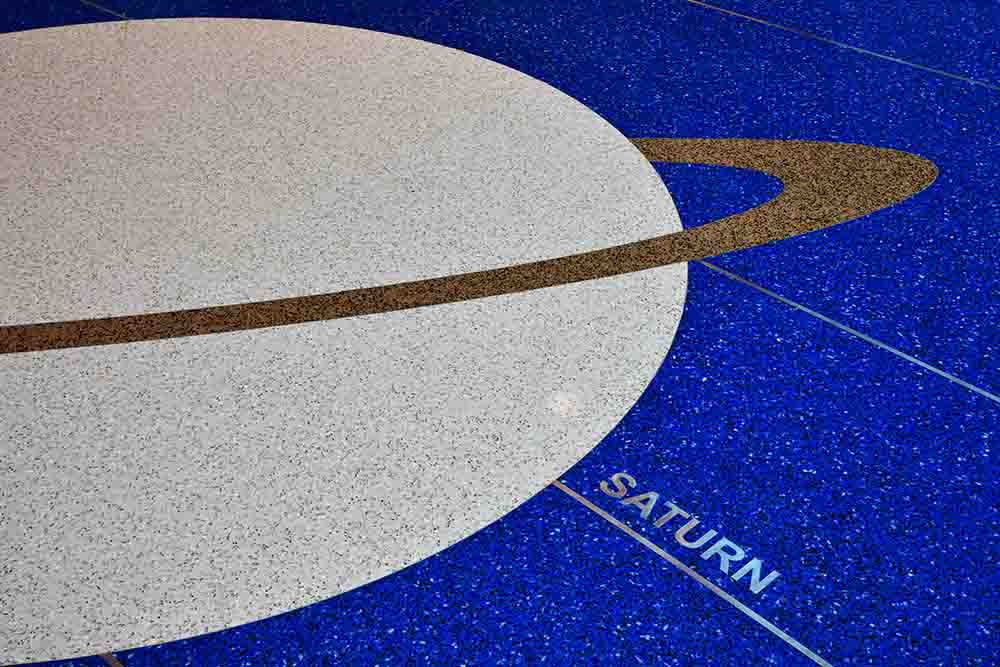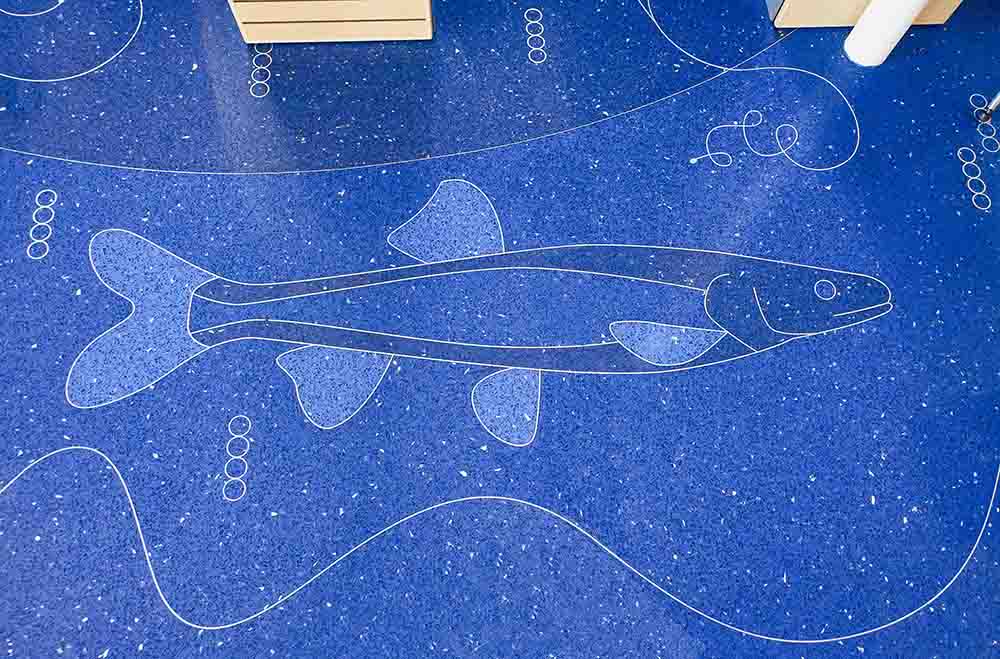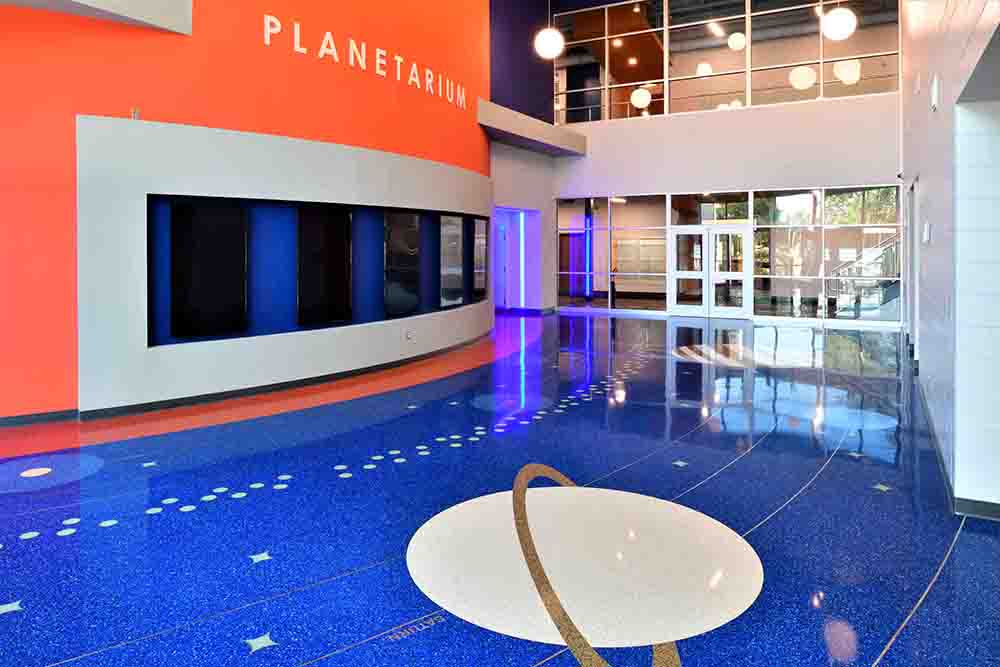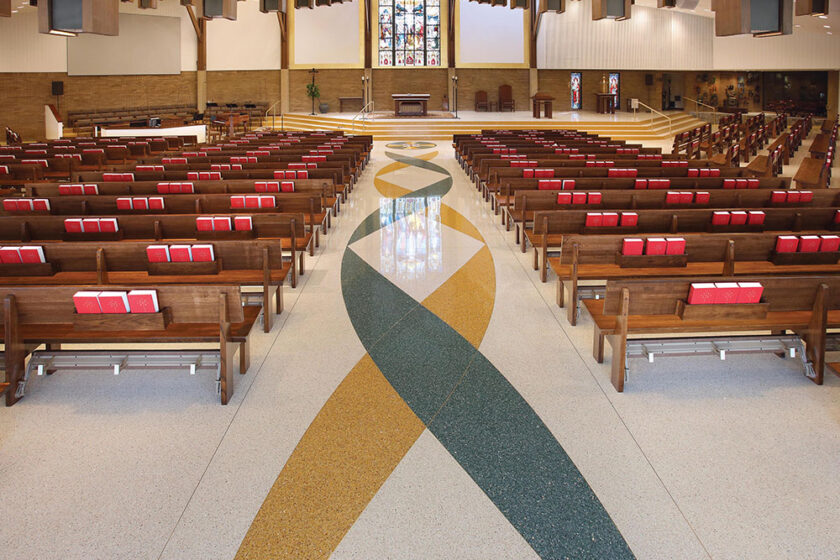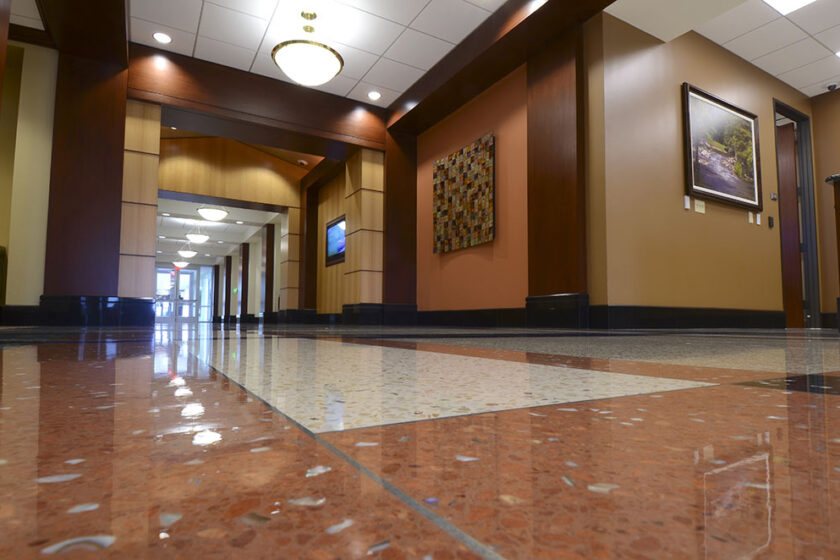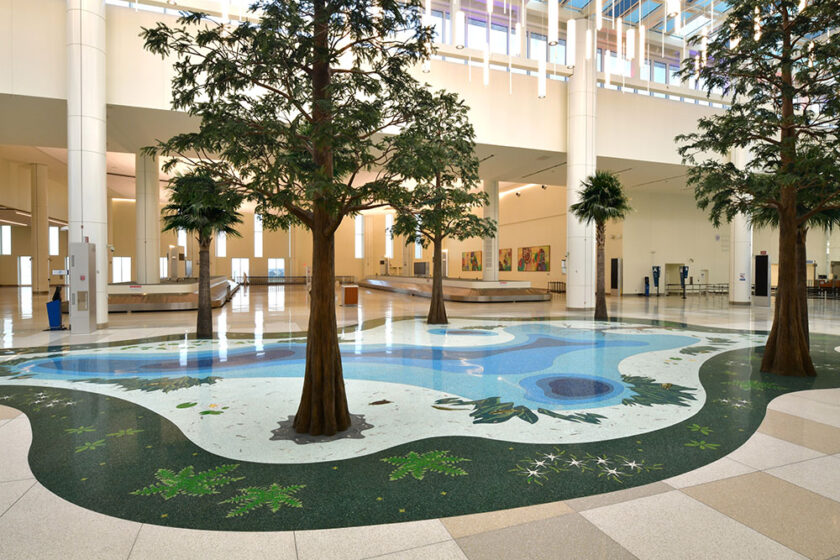Glass Aggregates for Even More Versatile & Sustainable Terrazzo
Of all the installations submitted for the annual National Terrazzo & Mosaic Association (NTMA) Honor Award judging in the past four years, over two-thirds of them have included glass aggregates.
“Word is spreading, and glass has become more in demand over the last five years,” said Dustin Thornley, sales manager for American Specialty Glass (ASG), one of several NTMA-member aggregate producers around the country. “There’s nothing else quite like recycled glass.”
Specifying glass as part or all of the aggregates mix is a great way to amp up the color and boost a project’s sustainability rating.
Why Designers Like Glass Aggregates
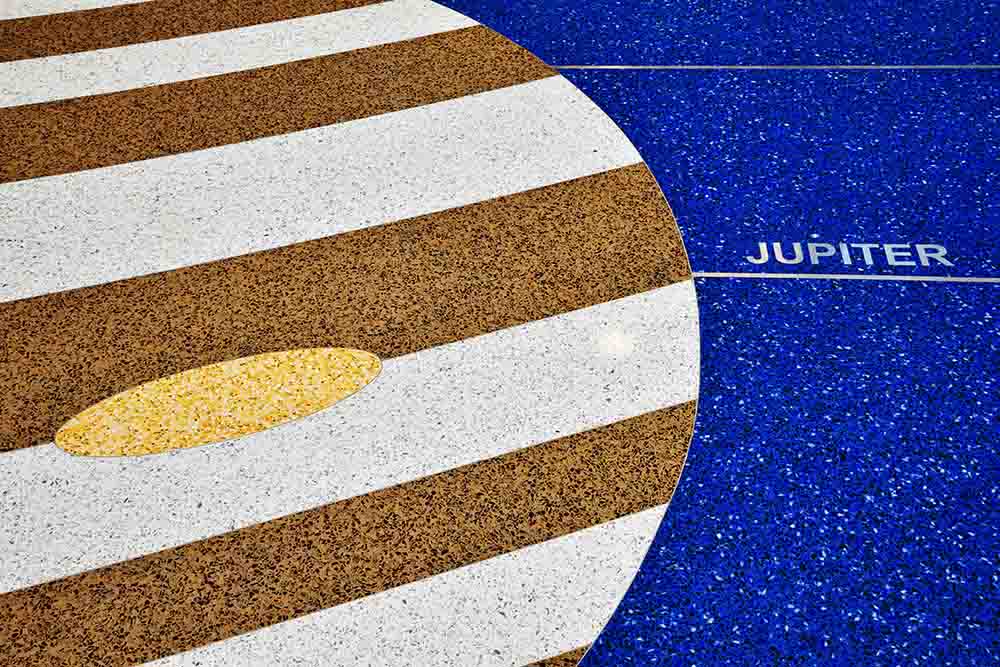
“Colored glass chip provides vibrant colors and jewel tones that are not found in natural aggregates,” Mr. Thornley explained. Glass also adds depth and dimension to the unlimited colors of epoxy to create an original look.
Glass aggregate companies can stock more than 24 different colors, many sizes in each color, from fine and #00 to larger sizes. Custom colors are also an option. Traditionally used in landscaping, the #5-7 sizes are becoming more popular for palladiana terrazzo installations. The larger aggregates require pouring the epoxy thicker than the standard half-inch, Mr. Thornley noted.
Mr. Thornley reported that a large terrazzo project might require 100,000 to over a million pounds of aggregate.
Since the inception of LEED programs in 1998, the demand for recycled glass chips for terrazzo has grown. Using recycled glass qualifies a project for LEED points, depending on the type of glass used. Glass is seen more commonly on the east coast, especially in New York City and Boston, Mr. Thornley said.
Recycling glass as aggregates also keeps it out of landfills. Mr. Thornley stated that Strategic Materials and its divisions are responsible for over 300 million tons of landfill avoidance.
How Chips are Produced
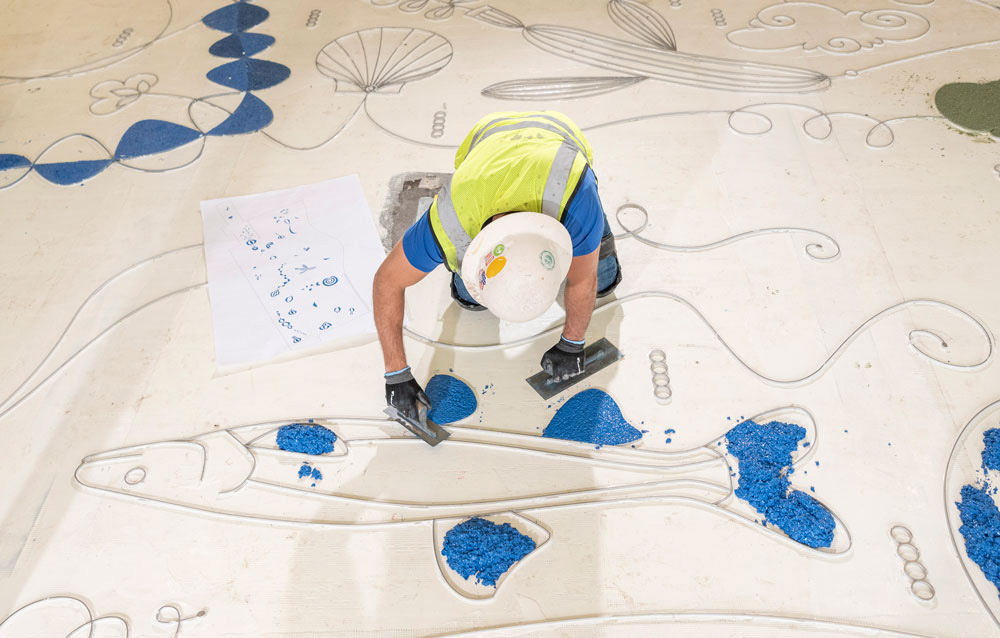
ASG Glass started recycling bottles and windows for the terrazzo industry in 2001. Glass chips in the same color are crushed and sized much as in a gravel pit or rock quarry operation.
As glass aggregates became more common, the demand for more color options led to the production of furnace glass. Color is added to plate glass or broken windows, which is then melted in a furnace, which typically runs at 1800-2200 degrees seven days a week.
Then the chips are crushed and sized. Next, they are tumbled to polish off sharp points and edges. Extra tumbling can produce smoother chips.
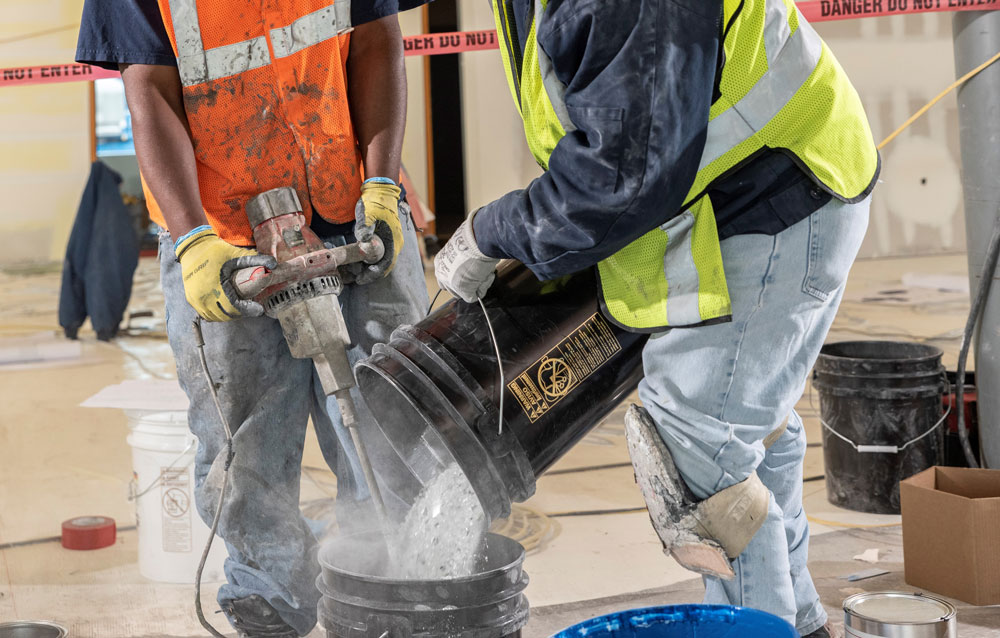
Cautions
A best practice is to pair 100 percent clear glass aggregates with a light-colored matrix. If a clear glass chip shatters, it may whiten, Mr. Thornley cautioned. He also advises against 100 percent clear glass in areas where heavy equipment may go through or where heavy objects may be dropped on the floor.
